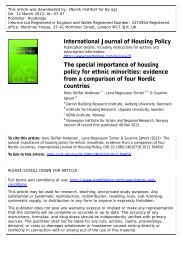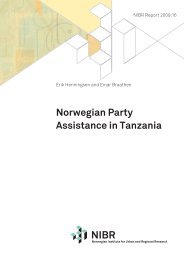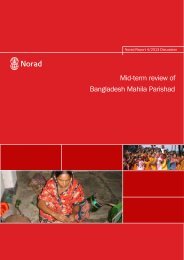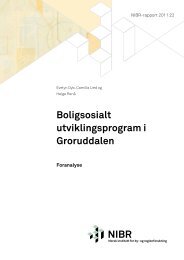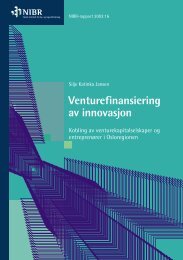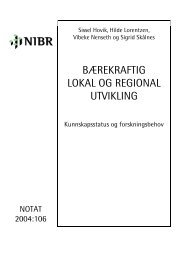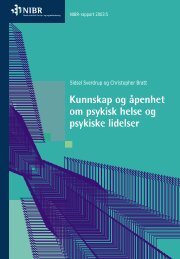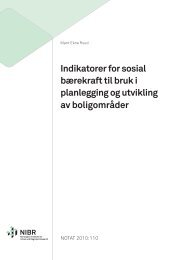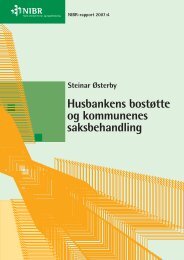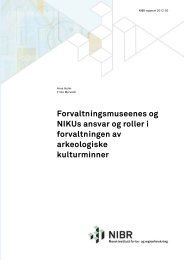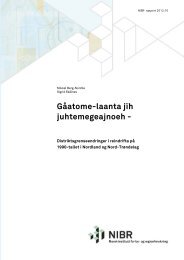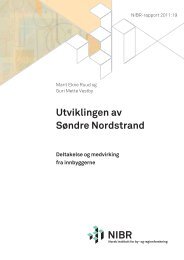Evaluation of the Southern and Eastern Africa Regional Centre for ...
Evaluation of the Southern and Eastern Africa Regional Centre for ...
Evaluation of the Southern and Eastern Africa Regional Centre for ...
- No tags were found...
You also want an ePaper? Increase the reach of your titles
YUMPU automatically turns print PDFs into web optimized ePapers that Google loves.
18<strong>and</strong> also any strategic planning documents that set out <strong>the</strong> programme vision, werereviewed <strong>and</strong> where possible, any <strong>the</strong>ory <strong>of</strong> change identified.2) Survey- this largely quantitative method is <strong>the</strong> bedrock <strong>for</strong> <strong>the</strong> study because itin<strong>for</strong>ms almost all aspects <strong>of</strong> <strong>the</strong> intervention, especially <strong>the</strong> impact questions. Keycharacteristics <strong>of</strong> <strong>the</strong> graduate cohort <strong>and</strong> key <strong>the</strong>mes from findings capture <strong>the</strong>beneficiaries’ views <strong>and</strong> also <strong>the</strong>ir contribution to broader processes. As proposed by<strong>the</strong> ToR <strong>the</strong> survey provides background in<strong>for</strong>mation on <strong>the</strong> c<strong>and</strong>idates, <strong>the</strong> type <strong>of</strong>organisation/institution <strong>the</strong>y worked <strong>for</strong> be<strong>for</strong>e attending <strong>the</strong> women’s lawdiploma/master, in<strong>for</strong>mation about <strong>the</strong> careers <strong>of</strong> <strong>the</strong> <strong>for</strong>mer students, <strong>the</strong>ir use <strong>of</strong><strong>the</strong> <strong>the</strong>oretical knowledge in <strong>the</strong>ir current work, <strong>the</strong>ir consideration <strong>of</strong> <strong>the</strong> mostuseful aspects <strong>of</strong> <strong>the</strong>ir course in women’s law, <strong>the</strong> impact <strong>of</strong> <strong>the</strong> training as assessedby <strong>the</strong>mselves, examples given <strong>of</strong> how <strong>the</strong>y have used <strong>the</strong>ir knowledge, <strong>the</strong>ir ownoutputs (publications, papers, newspaper, radio, TV, etc), <strong>the</strong>ir level <strong>of</strong> contact witho<strong>the</strong>r <strong>for</strong>mer students, <strong>and</strong> <strong>the</strong>ir opinions about how <strong>the</strong> effect <strong>of</strong> <strong>the</strong> training bestcould be improved. In addition to <strong>the</strong>se questions, we have asked about concreteachievements <strong>and</strong> contributions made to women’s law in particular <strong>and</strong> what kinds <strong>of</strong>networks <strong>the</strong>y are in.Some questions in <strong>the</strong> survey have gone to <strong>the</strong>ir current employers. Employers wereasked to assess <strong>the</strong> usefulness <strong>of</strong> <strong>the</strong> training in <strong>the</strong> work <strong>of</strong> <strong>for</strong>mer participants <strong>of</strong><strong>the</strong> programme as well as <strong>the</strong> usefulness <strong>of</strong> <strong>the</strong> training on policy <strong>for</strong>mulation. In <strong>the</strong>two countries where field work was conducted, we followed up on <strong>the</strong>se issues ininterviews where it was deemed relevant <strong>and</strong> necessary in order to get more feedbackto assess <strong>the</strong> impact. Some <strong>of</strong> <strong>the</strong> questions in <strong>the</strong> survey were open-ended, such asgiving examples <strong>of</strong> how <strong>the</strong> c<strong>and</strong>idates have used <strong>the</strong> knowledge gained <strong>and</strong> <strong>the</strong>iropinions about how training could be improved.The survey questions were <strong>for</strong>mulated by Jones <strong>and</strong> Hellevik based on <strong>the</strong> questionsoutlined in <strong>the</strong> TOR <strong>and</strong> in <strong>the</strong> NIBR tender. Hellevik made <strong>the</strong> technical input into<strong>the</strong> survey instrument used, namely, <strong>the</strong> Easyquest programme. The Easyquestprogramme is a web-based electronic survey instrument which is user friendly, cheap<strong>and</strong> makes <strong>the</strong> client <strong>the</strong> proprietor <strong>of</strong> <strong>the</strong> raw data. Tronstad <strong>and</strong> Aasen acted as testusers <strong>and</strong> gave feed back to <strong>the</strong> test questionnaire <strong>and</strong> <strong>the</strong> questions <strong>and</strong> <strong>the</strong>ir orderin <strong>the</strong> questionnaire was fur<strong>the</strong>r refined be<strong>for</strong>e it was sent out. Hellevik organised <strong>the</strong>final layout <strong>and</strong> technical issues regarding <strong>the</strong> questionnaire <strong>and</strong> it was distributed to181 respondents on November 12, 2012. Two reminders were distributed torespondents be<strong>for</strong>e <strong>the</strong> survey was closed on December 13. The analysis <strong>of</strong> <strong>the</strong> datawas also done by use <strong>of</strong> Easyquest, supplemented by use <strong>of</strong> Excel.Previously <strong>the</strong> poor response rates in <strong>the</strong> MTR h<strong>and</strong>icapped <strong>the</strong> validity <strong>of</strong>questionnaire sent out. The NIBR evaluation team were <strong>the</strong>re<strong>for</strong>e aware that somedecrease in response would be anticipated, which in some cases may be due tomigration <strong>and</strong> HIV/AIDS. The major challenge <strong>the</strong> team anticipated was to get as upto date as possible contact in<strong>for</strong>mation <strong>for</strong> respondents. We <strong>the</strong>re<strong>for</strong>e started <strong>the</strong>work by sending out an early tracer e-mail to all <strong>for</strong>mer students <strong>for</strong> whom we had e-mail addresses, requesting people to reply “Yes” <strong>for</strong> having received <strong>the</strong> e-mail. Thistracer e-mail also allowed us to see which e-mail addresses were out <strong>of</strong> use. Based on<strong>the</strong> results <strong>of</strong> this tracer e-mail, we followed up with <strong>the</strong> in<strong>for</strong>mation manager <strong>of</strong> <strong>the</strong><strong>Centre</strong> <strong>and</strong> <strong>the</strong> local consultant in Harare to find alternative e-mail addresses <strong>for</strong>



